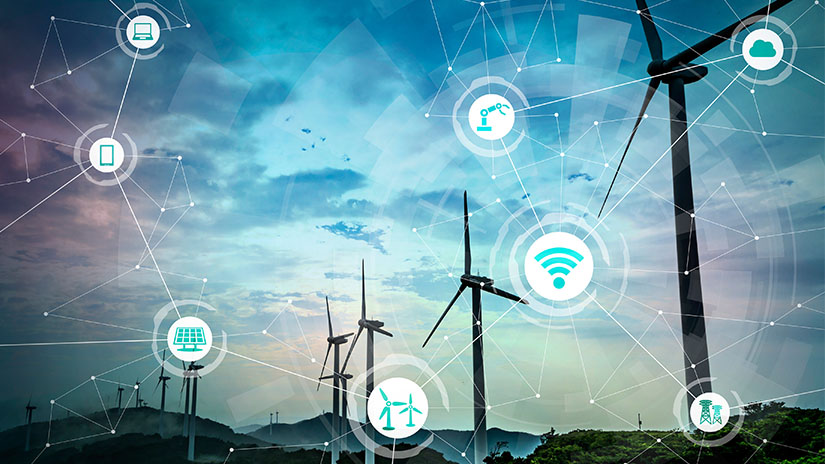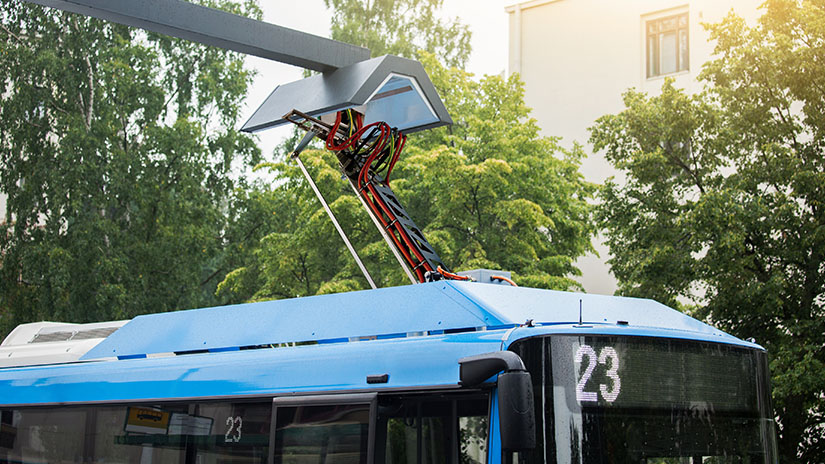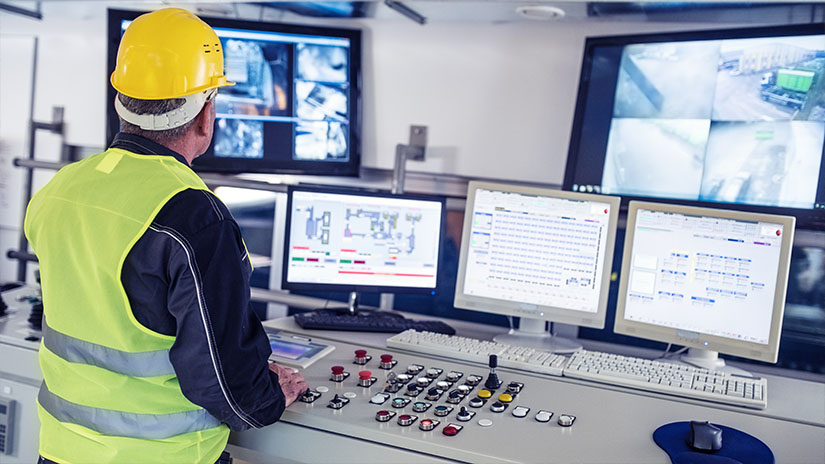By David Goddard, Head of Digitalization at Hitachi Energy
Global electricity consumption will account for more than 40 percent of the total energy demand by the year 2050, with some regions expanding well beyond this level. At the same time, there is a growing urgency to adopt and reach zero carbon emissions to improve air quality and slow the effects of climate change. As the demand for energy grows, green energy sources are needed to generate electricity that is powered by a sustainable power grid.
The need to integrate renewable resources into the power grid is adding layers of complexity to energy acquisition and distribution models. A fossil-fuel-based system taps large, centralized and predictable stores of resources, and then allocates them based on consistent and predictable usage. With renewable resources energy supplies are drawn from increasingly decentralized, disparate and distributed resources that fluctuate in their ability to fulfill demand. As more renewable resources are adopted, the process will become much more complex and variable.
The adoption of electricity instead of fossil fuel as the foundation for how we power the industry as a whole is accelerating. Its effects will be felt not just by the energy industry but across all industries and consumers as well. This transition presents both challenges and opportunities for everyone. And success depends on the availability of a digital power grid that is reliable, efficient and sustainable.
In the energy industry, energy supply and distribution are becoming increasingly digitalized and decentralized. This distributed operations model relies on real-time, data-driven analytics and automation to make and implement intelligent decisions fast.
Managing the power grid that supports this energy supply requires the combined expertise of both information technology (IT) and operations technology (OT) teams. The lines between IT and OT have blurred over time, and digitalization has accelerated this convergence as data is collected, analyzed and shared across systems and organizations.
As a result, the historical lines between the CIO and the business are also blurring. The CIO is becoming the governance authority as the business relies on the IT function to deploy and manage the technology that solves operational problems. In the interdependent, digitalized environment of the sustainable power grid, a partnership between IT and OT is essential.

The convergence of IT and OT will result in data-driven innovation — the ability to integrate data streams from multiple sources to enhance outcomes or identify new ways to optimize or evolve the business. This ability is fundamental to the development of a sustainable power grid.
The availability of renewable energy sources can be inconsistent and difficult to predict. Yet utility providers, and even some industries, are chartered with ensuring that there is always enough supply to meet demand. In this highly dynamic environment, companies must be able to work across boundaries, manage diverse regulatory requirements, and access the right data to make the best business decisions. Reliability, efficiency and sustainability depend on sophisticated data analytics and support systems capable of managing energy input and output.
To achieve a cleaner, more sustainable energy future for all, energy generators and providers are using digital solutions such as Hitachi's ETRM systems to perform complex tasks like energy data acquisition and risk analysis for power forecasting that is critical to support the green energy transition for a decarbonized society.
Electric vehicles (EVs) provide an excellent use case. The widespread adoption of (EVs) is already challenging utility companies and fleet providers to enable a robust electricity distribution network for battery charging that can keep these vehicles up and running, wherever they are.
At the same time, changes in energy management in submarkets — microgrids, local communities — are creating an opportunity for new business models that can generate additional revenue. For example, fleet managers for EVs will need to understand how to optimize the power they need to charge their fleets, based on a number of factors: where the vehicles are going, when to purchase the required power based on the market price, whether they should maximize the power they store, and what to do with any surplus power. Is there a new business opportunity in which the surplus can be sold, creating a new revenue stream?
These dynamics will change the nature of the market. For the power company, it can be either a huge opportunity (if the fleet company is consuming more electricity) or a significant risk (if the fleet company uses the power it’s storing to participate in a disruptive market). Either way, the more detailed the data that companies have, the greater their ability to not only serve current customers but also to innovate and create new revenue streams.

Hitachi is helping companies meet the challenges of the sustainable power grid through a platform approach that leverages the full breadth of Hitachi companies to address four key components:
We’ve developed solutions to enable better business outcomes in all these areas.
For example, our asset performance management (APM) solutions pull data from assets to identify their current performance, life expectancy and risk of failure. When organizations have this essential and accurate information in real time, they can make better informed and proactive decisions ― leading to greater reliability, reduced costs, and increased life cycle value of their assets. By codifying current processes, we can help our customers implement automation to optimize those processes, a capability that is especially important in these times of limited workforce mobility.
At Hitachi Energy, we break down data silos to provide information and actionable insights based not on function but on how the organization wants to use the data to enable electrification. APM is the starting place, providing the opportunity to maximize the return on assets currently in operation. Imbued with artificial intelligence (AI), APM enables organizations to quickly make decisions based on historical data and suggested actions, to automatically act, and to automatically evolve or optimize processes — these are all phases on a journey toward autonomy.

We predict that the adoption of electrification is going to be a megatrend. Electricity, not fossil fuel, will become the backbone of the energy industry. And digitalization is the enabler of all the megatrends across the electrical space.
Digitalization offers the opportunity to optimize legacy processes and adopt new approaches that change operational processes in both energy production and distribution. It allows organizations to host more disruptive technologies such as solar and wind, and make active, data-driven changes in how to balance the grid and drive reliability. By leveraging data-driven innovation, organizations can apply analytics based on data from technologies, including the Internet of Things (IoT), AI and machine learning, to fuel better decisions and optimize processes.
Digitalization in the energy industry is an IT and OT problem. Finding a partner who has expertise in both is key, and Hitachi — with Hitachi Vantara’s industry-leading IoT capabilities and big data expertise and Hitachi Energy’s deep operational expertise and digitally native technology — is one such partner.
Hitachi is driving digital transformation in the energy and utilities sector by using data-driven technology and insights to deliver smart grids and green energy solutions for a cleaner future.
We’re also helping drive the next big revolution in managing energy: the full adoption of electrification across crucial sectors including railway, urban transport, commercial fleets and mass transit systems as well.
There are many worldwide benefits to be gained through the move to electrification, including:
Hitachi is balancing social, environmental and economic values to power good through a sustainable energy future. We are a logical partner of choice for enabling a reliable, efficient and sustainable power grid.
Learn more about Hitachi Energy.

Head of Digitalization, Hitachi Energy
David Goddard is Head of Digitalization for Hitachi Energy and is responsible for driving the company’s digital evolution. He was previously with Cisco Systems in various executive leadership roles, most recently being responsible for the global IoT practice. In his earlier roles with Cisco, he led Cisco Customer Assurance, the crisis response organization, and the security research and operations organization. He holds a bachelor’s degree in telecommunication and electrical engineering.